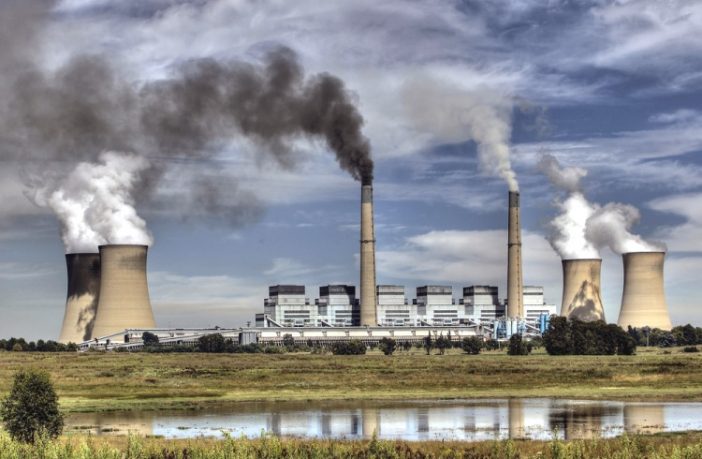- A team of researchers modeled the country’s energy future, finding that the drought plagued municipalities could benefit massively from large scale renewables deployment.
- The current reliance on coal-fired power stations causes immense water consumption, worsening the problem.
It was in January 2018 that South Africa made rather unfortunate headlines when the municipality of Cape Town announced that water supply was so short, people had to line up for hours to get limited daily rations of potable water. The issue could in part be solved by turning away from coal-based power generation. Additionally, swapping the country’s coal system for renewable energy resources would bring with it a range of socio-economic impacts that would be overall beneficial to society.
That is the conclusion of Pathway towards achieving 100% renewable electricity by 2050 for South Africa a newly published study in the Solar Energy journal, authored by Christian Breyer and Ayobami Solomon Oyewo, et. al. The research paper examined the current status of the South African power system and modeled how different policy implications would impact jobs, water consumption, grid capacity, and overall costs for such an energy system. In conclusion, the team found that if South Africa went on a speedy deep decarbonization pathway, some severe savings in terms of water and money would be on offer, compared to a business as usual scenario. Reportedly, South Africa’s solar and wind resources are so abundant the country could produce 71% and 28% of its energy demand from these resources.
Water crisis averted
At present, however, coal-fired power plants account for over 90% of electricity production in the country, helping it to the seventh rank in the list of the world’s biggest greenhouse gas emitters. Water withdrawals for thermal power generation in 2015 came in at 0.346 km³. Total water withdrawal for South Africa was 2.72 km³. According to the report, in 2050 that water consumption in the power sector can be reduced to just 0.0001 km³ used only by gas-fired power plants if the best policy scenario (BPS) is realized. If the current policy scenario (CPS) were to unfold South Africa power sector related water consumption would sit at 0.196 km³, of which 99.7% would be used to cool new coal fired power stations. This would mark a decline of power related to the water consumption of about 38%.
The researchers modeled that until 2050, South Africa would need to install 95 GW of single-axis tracking PV systems, 81 GW of rooftop prosumer systems and to a somewhat lesser extent fixed tilt systems. The authors assert that the deployment of solar PV would be the least cost option for South Africa to meet the country’s electricity demand by 2050. Aside from abundant solar resources that can be cheaply tapped, the region around the Cape has plentiful wind power resources, of some 51 GW on offer.
Clean energy jobs
The study also examined job creation potential. In the BPS, solar PV will generate about 67% of the jobs in the energy sector. If the current policy continues, the coal sector will have the lion’s share of in the industry, offering 45% of the available sector-specific jobs in 2050. “Overall, the number of direct energy jobs created in the BPS are seen to grow massively from 210,000 to nearly 408,000 by 2035. The job creation could be somewhat short-lived; however, as the study projects that beyond 2035, growth rates would, plateau and job creation would later level out to 278,000, by 2050.
Reportedly, the BPS would cluster more jobs in the construction and installation business, at first, and later tilt over to operations and management jobs. While in 2015, South Africa needed 787 jobs to generate one terra watt-hours (TWh) ten years later, the researchers estimate that this number could rise to 1148 jobs. Beyond that point, the number would fall again to reach 511 jobs/TWh in 2050. In the CPS, the demand for employment is said to drop more steeply from 2020 onwards, to reach a mere 338 jobs/TWh in 2050.
The team assumed an LCOE within the global range of 50-70 €/MWh, for the best policy scenario. The costs of electricity are expected to climb just slightly from €44.1/MWh today to €47.1/MWh by 2050 if the BPS is implemented. Should the policymakers continue, their current path costs of electricity in South Africa are likely to rise to €62.8/MWh, with annual system costs of €27.5 billion for the BPS and a whopping €55.8 billion for the CPS. “The financial outcomes of this research show that renewable energy-based systems are economically feasible in South Africa,” the report concludes.
The cost savings could become more pronounced if greenhouse gas pricing schemes and the cost of carbon capture are factored in, as is shown in the table below. “The results indicate that a 100% renewable energy system is the least-cost, least-water intensive, least-GHG-emitting and the most job-rich option for the South Africa energy system in the mid-term future,” the authors tout.
| unit | BPS | BPSnoCC | CPS | CPSnoCC | |
| Annualized system costs | billion € | 27.5 | 25.5 | 55.8 | 32.9 |
| LCOE | €/MWh | 50.8 | 47.1 | 104.9 | 62.8 |
| Demand | TWh | 539.8 | 539.8 | 539.8 | 539.8 |
| Generation | TWh | 648.1 | 606.2 | 561.1 | 561.1 |
| Installed Capacity | GW | 321.1 | 294.6 | 133.5 | 133.5 |
Author: Marian Willuhn
This article was originally published in pv magazine and is republished with permission.











